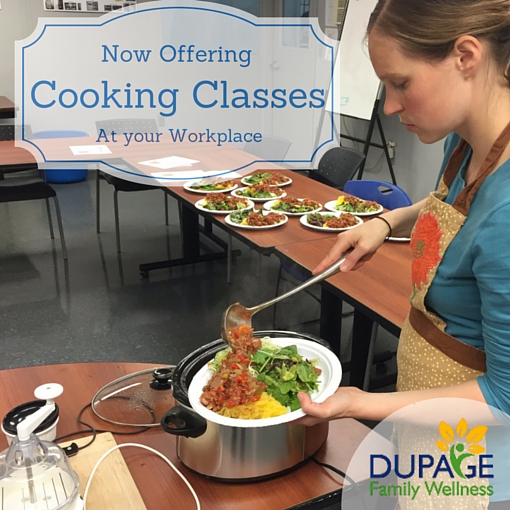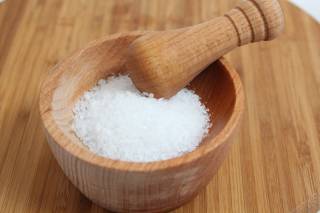
Recently I was fascinated by a podcast featuring breakthrough work in the area of human genomics to discover the common factors of populations that live the longest.
The term “Blue Zone” has been coined for the five regions that have a significantly greater concentration of centenarians, that is, people that live to be at least one hundred. There are five areas that have been named Blue Zones, which include: Ikaria, Greece; Okinawa, Japan; Ogliastra Region, Sardinia; Loma Linda, CA; and Nicoya Peninsula, Costa Rica.
Scientists have learned that both lifestyle and diet have the ability to turn on and off genes that contribute to longevity and robust health.
Common Lifestyle Factors
-
People move their bodies - a lot. They walk, and garden, and have an active life.
-
Healthy lifestyle is important to the entire community ! They have close social circles that reinforce healthy behaviors.
-
Time to de-stress daily is part of the culture. There are different traditions in each area including siesta (afternoon nap), a happy hour sort of tradition, or a daily time for prayer and meditation.
-
The centenarians are an integral part of their communities, often religious communities. These people were not alone but had neighbors, friends, and family frequently dropping to spending time with them.
-
The centenarians are committed to their families.
Common Nutrition and Diet Factors
- Stop eating when your stomach feels 80% full to avoid weight gain.
- Eat the smallest meal of the day as your last meal in the evening.
- Eat mainly plants and beans. Eat meat rarely and in portions of 3-4 ounces. In the Blue Zones, they only eat meat five times per month, on average.
- Limit alcohol consumption to 1-2 glasses per day.
- Eat mostly locally sourced food, including a lot of herbs.
What are the most common foods in each area?
Since the foods are locally sourced, they differ for each region.
- Ikaria, Greece, the foods known for longevity include: feta cheese, lemons, and herbs like sage and marjoram that they use daily in tea.
- The healthy staples in Okinawa, Japan are bitter melons, tofu, garlic, brown rice, green tea, and shitake mushrooms.
- In Sardinia, Italy they eat goats milk and sheep cheese, sourdough bread and barley, along with fennel, fava beans, chickpeas, tomatoes, almonds, milk thistle tea, and wine from the locally grown Grenache grapes.
- It may be surprising that one of the Blue Zones was actually in the United States. What are they doing right in Loma Linda California? Most members of this community are Seventh-day Adventists, so they avoid smoking, drinking, TV, movies, and other forms of media. Their diet follows biblical principles, thus focusing on whole grains, nuts, and vegetables with a small amount of meat and fish. It also includes avocados, salmon, beans, oatmeal, and eggs. They drink only water.
- In the Nicoya Penninsula of Costa Rica, one of the mottos is "Put an egg on it". In addition, they eat beans, corn, squash, papayas, yams, bananas, and peach palms.
Learning from My Great Grandmother
The photo is my great-grandmother, who lived from 1900 - 1999, almost 100 years with a good quality of life, and without chronic illness. I wish I could talk to her now. From what I can gather, she shared many characteristics of those in the "Blue Zones".
- She was always active, walking, swimming, and riding a "tri-cycle" even into her 90's.
- Along with my great grandfather, they grew a big garden, cooked from it, and shared it with the family.
- She was part of social groups that kept active playing games.
- She was active in her communities, and volunteered frequently.
- Family was important to her. She came to stay with us for a few weeks every summer, and when she was not here she always kept in touch.
Not only is she my longest living relative, she is also a good role model following these lifestyle patterns. In addition, she always had a positive outlook on life and was a joy to be around.
What Can We Take Away from the Blue Zones?
We can learn the following from the Blue Zones:
- There is no one size fits all diet that is best for everyone. Rather, we should eat the real whole foods that are found locally.
- We should listen to the signals of our body.
- We must realize that our lifestyle affects our health and pay particular attention reducing our stress and maintaining our community involvement.
Joelle Kurczodyna, NTP
Joelle and I are excited to announce that we have been working hard to create our own wellness program just for you!! There will be more details posted in the coming weeks, but we wanted to give you a heads up so you can get excited too! 
In this wellness program we will teach you how to eat, how to move, how to reduce stress, how to sleep better, and more! Basically, our goal is to help you become happier and healthier! We are thrilled to share our knowledge and experiences with you!
If you are just as pumped as we are about becoming happier and healthier- email me at This email address is being protected from spambots. You need JavaScript enabled to view it. and let me know. We are looking for a few lucky people to test out the program before the official launch date!
In Health
Dr. Jamie

If you have been paying attention, you know that we at DuPage Family Wellness are passionate about nutrition and helping people to eat REAL FOOD!! I am excited to announce that we are offering a NEW SERVICE to help spread this message to more people in the community!!
Healthy cooking classes for businesses and corporations are now available! These classes are fun and a great fit into a corporate wellness program.
How does it work? We come to your workplace and bring a healthy lunch. While you and your coworkers eat this nutritious and delicious meal, we demonstrate various components of how the lunch was prepared. You will learn WHY we are eating the food we are, and the benefits of incorporating our REAL FOOD principles!
Classes can be as short as 30 minutes over lunch, or longer depending on your workplace needs. Topics and menus can be customized. It can be a single event or a series of classes. Our most recent class consisted of two 30 minute sessions with 12 employees at each.
Don't have a kitchen? Don't worry, we can improvise! As long as there are tables and chairs, we can make it work!
Eating real food not only has health benefits, but it has been shown to improve mood! What company wouldn't want happier and healthier employees! If your company is looking for a new fun activity for it's employees, let us know!
Halloween is just around the corner, and this year, I was excited to hear about a new trend – the Teal Pumpkin Project . As food allergies are becoming rampant, affecting 1 in every 13 kids, many are unable to enjoy the typical candy offerings that most of their peers enjoy on Halloween.
. As food allergies are becoming rampant, affecting 1 in every 13 kids, many are unable to enjoy the typical candy offerings that most of their peers enjoy on Halloween.
The idea of the Teal Pumpkin Project is to place a teal pumpkin outside of your house letting trick or treater’s know that in addition to candy, your home also offers non-food options. Some food alternatives include glow sticks, stickers, coins, pencils, etc. You can read more about the Teal Pumpkin Project here.
As a nutritional therapy practitioner and soon to be parent, this is one tradition that has been a struggle for me over the last couple of years as we are clearly seeing the negative effects that sugar is leaving. See our posts on these negative impacts of sugar in PART 1 and PART 2 of the Not So Sweet Sugar Reality. I love the idea of giving the option for something other than a sugary treat.
As another alternative, friends of ours have introduced the “sugar fairy” or “sugar witch” at their house. After trick or treating is over, the candy is put in a designated location and for the sugar fairy. She uses sugar to keep warm during the winter and in exchange for the candy she leaves a special gift!
Whatever your family decides to do, have a fun and safe Halloween!
Author: Joelle Kurczodyna, NTP
Salt has been under attack in recent years with claims that is causes high blood pressure, heart disease, and stroke. Almost everything that you read promotes low sodium diet with a decrease in salt consumption.

Does salt live up to these undesirable claims or could it actually have properties that promote health and well being?
To preface the importance and roles of salt in the body, let’s begin by looking at the history of salt. Consumption of salt can be traced back to the advancement of people from a hunter-gatherer lifestyle to the beginning of agriculture as people began to use salt to make food taste good and preserve dairy and meat. Salt has also been recognized as causing an increase in the production of glial cells in the brain, which are responsible for giving us the ability to think creatively and engage in long term planning. Salt was revered as a gift from God. Plato referred to salt as “especially dear to the gods” while Homer called it a “divine substance.” In the Celtic language, the word for salt meant “sacred” and Roman soldiers were often paid partially in salt, which is why our word for “salary” is derived from the Latin word “Salarium” or salt. Furthermore, salt had a crucial impact on trade routes as well as many social and political implications. (From Sally Fallon’s article)
Clearly, the impact of salt through the ages has been staggering. So, why in the last 50 years has there been a push to ban the substance?
Unfortunately, most research done on salt, has been done with the very refined and processed table salt we find on most kitchen tables these days. Modern table salt has been chemically treated and exposed to very high temperatures which remove any valuable minerals that salt contained. Refiners then add several additives to the dry salt, often including aluminum compounds (which have been connected with Alzheimer’s disease). In order to add back the natural iodine that was removed, potassium iodide is added in potentially dangerously high amounts. In order to stabilize the iodide compound, processors add dextrose, which changes the color of the salt to purple. In order to restore whiteness to the salt, a bleaching agent is added. (Nourishing Traditions 48). When the final product has been chemically and heat treated, it loses the integrity of the sun-dried sea salt that has been highly regarded for generations. If fact, when salt water fish are placed in water with table salt, they die (http://wellnessmama.com/3745/is-salt-healthy/).
Clearly, the growing evidence that salt should be avoided is absolutely true when talking about processed table salt. However, there is a huge need in the body for unrefined, pure sea salt.
From MD Dr. Batmanghelidj’s book, “Your Body’s Many Cries for Water,” he includes all of the following as critical roles of sea salt in the body:
- Water, salt and potassium together regulate the water content of the body
- Salt is a natural antihistamine
- Salt is a natural “anti-stress” agent for the body
- Salt is essential for preserving the serotonin and melatonin levels in the brain
- Salt is critical for maintaining muscle tone and strength
- Salt is effective in stabilizing irregular heartbeats and contrary to the belief that salt causes high blood pressure, it is actually essential to the regulation of blood pressure
- Salt is vital for sleep regulation and is a natural hypnotic
- Salt is a necessary component in the treatment of diabetes and helps in the regulation of blood sugar
- Salt is crucial to the communication and information processing nerves cells from conception to death
- Salt is vital for the absorption of food particles through the intestinal tract
- Salt helps clear the lungs of mucus plugs and sticky phlegm
- Salt is essential for the prevention of muscle cramps
- Salt is vital to making the structure of bones firm and can be helpful in those with osteoporosis
- Salt helps maintain sexuality and libido
- Sea salt contains about 80 mineral elements that the body needs!
Dr. Batmanghelidj, MD recommends a half teaspoon of salt per every 10 cups consumed in order to get an adequate balance and 1.5 -3.5 teaspoons per day total with more active people on the higher end.
What kind of salt should I eat?
The short answer is, REAL salt. Look for unrefined, sea salt that is full of trace minerals and is not pure white but its natural color. Depending on where the salt is harvested from, it will contain different levels and kinds of minerals. Because of this, it is a good idea to try different kinds of sea salts to get the different benefits that each provides. Some common types of real salts include: Celtic sea salt, Himalayan salt, or black lava salt. My personal favorite is this Celtic sea salt.
It is a good thing that the body was given taste buds specifically meant to taste and enjoy salt. This was not a practical joke by the body but actually to ensure that we would eat our food with salt.
Backpack Ergonomics
One of the topics I am commonly asked about this time of year is about backpack ergonomics. On the left, straps are loose, so backpack hangs low, resulting in an an arch in the lower back and forward posture. On the right, the straps are tighter, and posture is better.
On the left, straps are loose, so backpack hangs low, resulting in an an arch in the lower back and forward posture. On the right, the straps are tighter, and posture is better.
How much weight is too much to carry in a backpack? Are there right and wrong ways to carry a backpack?
I have compiled a quick list of my top backpack tips for you. While we mostly think of kids going to school, these rules also apply to adults as well, so keep them in mind for the next time you carry your laptop or travel somewhere with your gear.
- Use both straps on the backpack.
- Wearing the backpack over just 1 shoulder (especially the same shoulder repeatedly), will cause the body to shift as it compensates, and lead to various muscles groups becoming weaker, and others becoming tighter.
- Use the chest buckle or waist strap.
- The extra buckle provides more support and distributes the weight better.
- Don't overload the backpack.
- Backpack weight should be less than 10-15% of the bodyweight of the person carrying the backpack.
- Buy backpack that is lightweight and padded.
- Canvas is lighter than leather. Thick padded straps distribute the weight. Padding in the lower back redistributes weight and takes pressure off the neck and shoulders.
- Put heaviest items closest to your body.
- This puts the heavy items closer to your center of gravity. The backpack will feel lighter.
- Keep the straps tight.
- This keeps the backpack close to your body. Loose straps and holding the backpack further from your body puts more load on your neck and shoulders.
Remember that that wearing a backpack should not cause discomfort.
If your child complains about back, neck, or shoulder pain, try making these simple modifications. If they still have discomfort, give us a call. Pain, especially in kids, is not a normal “back to school symptom”, and should be taken care of as quickly as possible. The great thing about kids is that their bodies typically respond quickly to treatment.





 . As food allergies are becoming rampant, affecting 1 in every 13 kids, many are unable to enjoy the typical candy offerings that most of their peers enjoy on Halloween.
. As food allergies are becoming rampant, affecting 1 in every 13 kids, many are unable to enjoy the typical candy offerings that most of their peers enjoy on Halloween.
